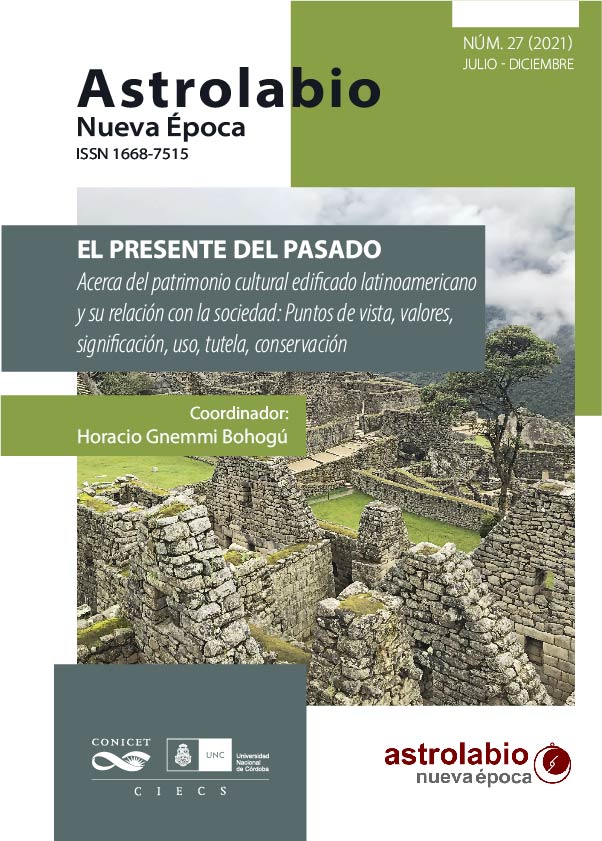The State as Protagonist: Reconversion of Industrial Buildings in Santa Fe (Four Cases)
Main Article Content
Abstract
Given the changes in the productive and economic systems of the last decades of the 20th century, much industrial architecture became obsolete, with a progressive abandonment. In recent years in the city of Santa Fe, Argentina, there were interventions from the municipality and the provincial government revealing the importance of actions that, while recovering architectures of this type, make valuable contributions to the construction of citizenship and urban life.
This article is presented as a reflection derived from a research project, which interrogates the architectures produced through state management and addresses the problem from the methods of the history of architecture as well as from the critical interpretation of the collected data.
The main objective of the analysis of these four cases is to consider the positive impact of this type of intervention, intended for the recovery of deactivated industrial buildings through political actions, to turn them over to public use, with the intention to offer an improvement in the present and, at the same time, to guide society towards building a better future.
Downloads
Article Details

This work is licensed under a Creative Commons Attribution-NonCommercial-ShareAlike 4.0 International License.
Astrolabio, Nueva Época está protegida bajo licencia Licencia Creative Commons Atribución-NoComercial-CompartirIgual 4.0 Internacional. La propiedad intelectual de los artículos pertenece a los autores y los derechos de edición y publicación a la revista. Los artículos publicados podrán ser usados libremente para propósitos científicos y académicos, siempre y cuando se realice una correcta citación de los mismos. Cualquier persona física o jurídica que desee reimprimir parte o la totalidad de algún artículo, deberá obtener permiso escrito de los editores de Astrolabio Nueva Época, quien lo otorgará con el consentimiento del autor.
References
BACZKO, Bronislaw. (1991). Los imaginarios sociales. Memorias y esperanzas colectivas. Buenos Aires: Nueva visión.
CHOAY, Françoise. (2007). Alegoría del patrimonio. Barcelona: Gustavo Gili.
CODINA, Silvana y GONZÁLEZ, María de los Ángeles. (2011a). El Molino: fábrica cultural. Buenos Aires: Losada.
CODINA, Silvana y GONZÁLEZ, María de los Ángeles. (2011b). La Redonda: arte y vida cotidiana. Buenos Aires: Losada.
GNEMMI, Horacio. (2004). Aproximaciones a una teoría de la conservación del patrimonio construido. Córdoba: Brujas.
FUSCO, Martín (2004). La noción de patrimonio: evolución de un concepto. Buenos Aires: Nobuko.
LIERNUR, Pancho. (1986). “La fábrica como texto”. Punto de Vista, 27, 11-14.
MONS, Alain. (1994). La metáfora social. Imagen, territorio, comunicación. Buenos Aires: Nueva Visión.
MÜLLER, Luis. (1998). “Postales de la pampa gringa. La construcción cultural del paisaje en el área central de la provincia de Santa Fe”. Block, 2, 102-109.
MÜLLER, Luis (ed.). (2001). Arquitectura, sociedad y territorio. El Ferrocarril Santa Fe a las colonias. Santa Fe: Universidad Nacional del Litoral.
MÜLLER, Luis. (2012). “Un largo y sinuoso camino. La bóveda cáscara en los proyectos de Amancio Williams”. Block, 9, 32-43.
REINANTE, Carlos y COLLADO, Adriana (dir.). (1993). Inventario. 200 obras del patrimonio arquitectónico de Santa Fe. Santa Fe: Ediciones UNL.

